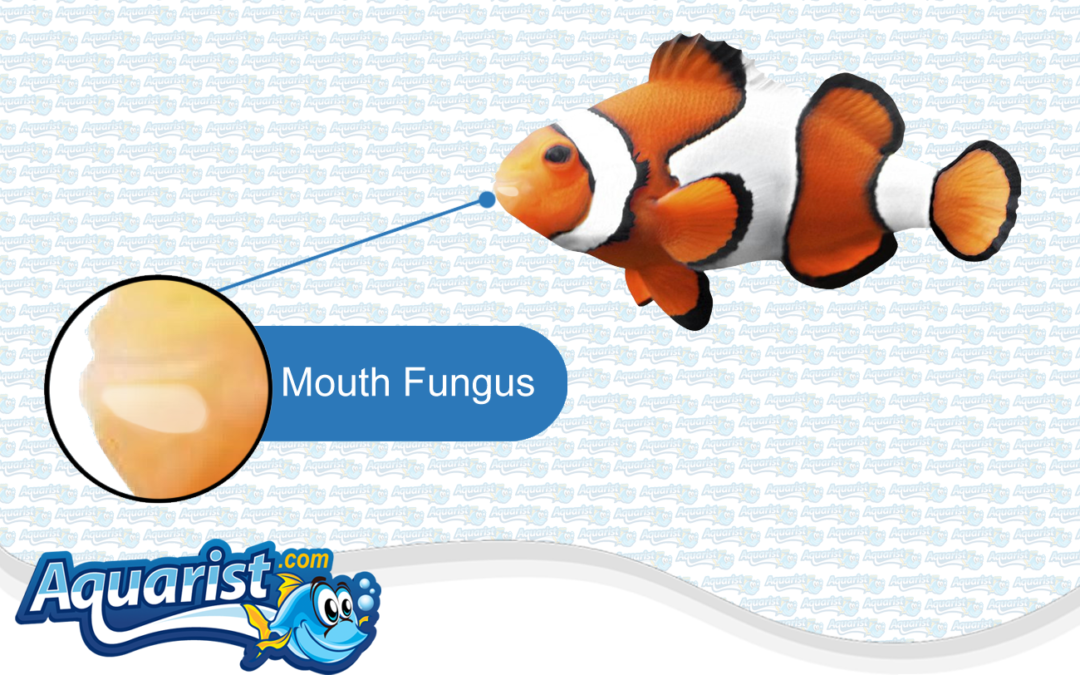Comprehensive Guide to Saltwater Fish Disease: Mouth Fungus
Mouth Fungus, also known as "Cottonmouth" or "Columnaris," is a common disease that affects saltwater fish. Despite the name, it is not caused by a fungus but by a bacterial infection, typically Flavobacterium columnare. This disease can cause cotton-like growths around the mouth, gills, and fins of the fish, leading to serious health problems if not treated promptly. This guide will provide an overview of the causes, symptoms, treatment options, and preventive measures for Mouth Fungus in saltwater fish.
What is Mouth Fungus?
Mouth Fungus is a bacterial infection that causes whitish, cotton-like growths around the mouth, lips, and gills of saltwater fish. It is often mistaken for a fungal infection due to the appearance of the lesions, but it is actually caused by a bacterial pathogen, Flavobacterium columnare. The infection can spread quickly and is highly contagious, affecting other fish in the tank if not treated promptly.
Causes of Mouth Fungus
Several factors can contribute to the development and spread of Mouth Fungus in saltwater aquariums:
- Poor water quality: High levels of ammonia, nitrite, or nitrate can stress fish and make them more susceptible to bacterial infections.
- Injuries: Fish with open wounds or damaged tissue are at a higher risk of developing infections like Mouth Fungus.
- Stress: Fish that are stressed due to overcrowding, aggressive tank mates, or sudden changes in water conditions are more prone to infections.
- Introducing infected fish: Adding new fish to the tank without proper quarantine can introduce the bacteria that cause Mouth Fungus.
Symptoms of Mouth Fungus
Recognizing the symptoms of Mouth Fungus early is essential for effective treatment. Common signs of the infection include:
- White, cotton-like growths: The most distinctive symptom is a white, cottony appearance around the mouth, lips, or gills. The growth may also appear on the fins or body.
- Ulcers or lesions: As the disease progresses, ulcers or open sores may develop where the cotton-like growth was present.
- Labored breathing: Fish may exhibit rapid gill movement or difficulty breathing if the gills are affected.
- Lethargy: Infected fish may become less active and spend more time at the bottom of the tank.
- Loss of appetite: Fish may stop eating or show little interest in food.
Treatment Options for Mouth Fungus
Prompt treatment is essential to prevent the spread of Mouth Fungus and to help infected fish recover. The following steps can help you effectively treat this disease:
- Isolate affected fish: Quarantine infected fish in a separate tank to prevent the spread of the infection to healthy tank mates.
- Use antibacterial medications: Treat the infected fish with antibacterial medications such as kanamycin, erythromycin, or oxytetracycline. These can be used in a hospital tank or as a medicated bath.
- Improve water quality: Perform water changes to reduce ammonia, nitrite, and nitrate levels. Ensure that the aquarium is properly filtered and well-maintained.
- Add aquarium salt: For saltwater tanks, increasing the salinity slightly can help reduce stress and support the fish's immune system.
- Use medicated foods: Feeding fish medicated food that contains antibiotics can help treat the infection from the inside.
Preventing Mouth Fungus
Prevention is always better than treatment when it comes to fish diseases. The following steps can help reduce the risk of Mouth Fungus outbreaks in your saltwater aquarium:
- Maintain optimal water quality: Regularly test and monitor water parameters, including pH, ammonia, nitrite, and nitrate levels. Perform regular water changes to keep the tank clean.
- Quarantine new fish: Always quarantine new fish for at least 2-4 weeks before introducing them to the main tank. This helps prevent the introduction of bacteria and other pathogens.
- Provide a stress-free environment: Avoid overcrowding, provide plenty of hiding spots, and ensure that tank mates are compatible.
- Handle fish carefully: Avoid rough handling of fish, as injuries can make them more susceptible to infections.
- Clean equipment regularly: Disinfect equipment like nets, siphons, and buckets that may come into contact with multiple tanks.
Pro Tips for Treating and Preventing Mouth Fungus
- Act quickly: Mouth Fungus is highly contagious, so early detection and treatment are crucial to prevent outbreaks.
- Monitor water parameters closely: Poor water quality is a common trigger for bacterial infections. Regularly test water parameters and adjust as needed.
- Finish the full treatment course: Even if symptoms improve, continue the full course of medication to ensure the infection is fully eradicated.
- Disinfect the quarantine tank: After treating infected fish, thoroughly clean and disinfect the quarantine tank and any equipment used to prevent future infections.
Common Mistakes to Avoid When Treating Mouth Fungus
To increase the effectiveness of the treatment and avoid complications, be sure to avoid these common mistakes:
- Stopping treatment too early: Discontinuing treatment before the full course is complete can lead to a relapse or antibiotic resistance.
- Overusing medications: Using multiple medications at once without guidance can cause harmful interactions and stress to the fish.
- Not quarantining new arrivals: Skipping quarantine can introduce Mouth Fungus and other diseases to your main tank.
- Failing to address underlying causes: If poor water quality or tank stress is not addressed, the risk of recurring infections remains high.
Understanding the Impact of Mouth Fungus on Fish Health
Mouth Fungus can significantly affect the health and well-being of saltwater fish. The cotton-like growths and subsequent ulcers can cause pain, interfere with feeding, and lead to secondary infections. If left untreated, the infection can spread rapidly and become fatal. Proper diagnosis, prompt treatment, and preventive measures are essential for maintaining a healthy saltwater aquarium.
Conclusion
Mouth Fungus is a serious and contagious bacterial infection that requires immediate attention. By recognizing the symptoms early, using effective treatment methods, and taking preventive measures, you can help protect your fish from this common disease. Remember to quarantine new arrivals, maintain optimal water quality, and provide a stress-free environment to keep your saltwater fish healthy. With proper care and timely intervention, you can successfully manage and prevent Mouth Fungus outbreaks in your aquarium.

